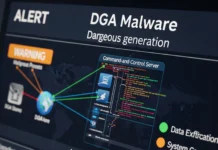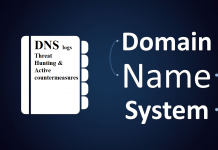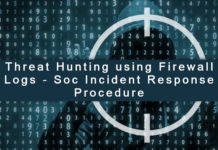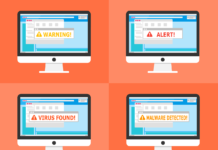Introduction
In today’s digital-first world, businesses of all sizes are under constant pressure from cyberattacks. The rise of online services, digital transformation initiatives, and cloud adoption has created new opportunities for growth but also new risks. Remote work and mobile-first collaboration have widened the attack surface, giving cybercriminals more avenues to exploit. What once was a concern primarily for large enterprises has now become a shared challenge across small and mid-sized organizations as well.
The financial, reputational, and operational consequences of an attack can be devastating. A single breach can disrupt services, erode customer trust, and invite regulatory penalties. This is why preparedness is no longer optional—it has become a core business necessity.
What Is a Cyber Attack?
A cyber attack can be simply defined as any deliberate attempt to gain unauthorized access to computer systems, networks, or data with malicious intent. These attacks may aim to steal sensitive information, disrupt normal operations, cause financial damage, or even sabotage critical infrastructure.
Cyberattacks are carried out by a wide range of actors, including cybercriminals seeking financial gain, hacktivists pursuing ideological goals, and even state-sponsored groups involved in espionage or digital warfare. While the terms “cyberattack,” “cybercrime,” and “cyber incident” are often used interchangeably, there are subtle distinctions. Cybercrime focuses on profit-driven activities, cyberattacks can encompass a broader range of motives, including espionage, and cyber incidents are general security events that may or may not involve malicious intent.
For organizations seeking clarity, understanding what is cyberattack is with examples helps illustrate the real-world impact. For instance, ransomware that locks up critical files until a payment is made, or phishing campaigns that trick employees into revealing login credentials both represent tangible threats that businesses regularly face.
Common Types of Cyber Attacks Businesses Face
Malware and Ransomware
Malware refers to malicious software designed to infiltrate or damage systems. Ransomware, one of the fastest-growing threats, encrypts business data and demands payment for release. High-profile cases like the WannaCry and Colonial Pipeline attacks have shown how disruptive ransomware can be, shutting down operations for days and costing millions in recovery.
Phishing and Social Engineering
Phishing remains one of the most effective attack vectors because it exploits human error. Cybercriminals craft convincing emails or messages that trick employees into clicking links or sharing sensitive data. Business Email Compromise (BEC) scams, in particular, have caused billions in losses worldwide by impersonating executives and redirecting financial transactions.
Denial-of-Service (DoS) and Distributed DoS (DDoS)
These attacks overwhelm systems with excessive traffic, rendering services unavailable to legitimate users. With the rise of botnets and IoT-driven attacks, DDoS campaigns have become more powerful, capable of crippling even large organizations’ online services.
Insider Threats
Not all risks come from outside. Employees, contractors, or partners can intentionally or accidentally expose systems to threats. Poor awareness, weak passwords, or malicious intent can make insiders one of the most unpredictable risks.
Exploiting Vulnerabilities
Unpatched systems, outdated software, and misconfigured cloud environments are open invitations to attackers. Zero-day exploits, which target flaws unknown to vendors, make this risk even greater, as businesses often cannot respond in time.
The Business Impact of Cyber Attacks
The financial burden of an attack can be immense, covering ransom payments, system restoration, legal fees, and lost revenue from downtime. However, the damage doesn’t stop at finances. Customers lose trust when their personal information is compromised, and partners may rethink collaboration with companies that fail to secure their networks. Regulatory bodies also impose fines for non-compliance with data protection laws like GDPR, HIPAA, or PCI DSS. In industries where supply chains are interconnected, a single breach can cause disruptions across multiple partners, amplifying the risk.
Why Businesses Must Be Prepared
Cybercriminals are using increasingly sophisticated methods, often powered by automation and artificial intelligence, to target victims. Contrary to popular belief, small and medium-sized businesses are not safer than large enterprises. In fact, they are often considered easier targets because of weaker defenses and limited budgets.
Preparation goes beyond avoiding losses—it has become a differentiator. Companies that invest in strong cybersecurity not only prevent incidents but also build trust with customers and partners. In a competitive market, demonstrating resilience can be just as important as offering innovative products and services.
Key Strategies for Business Preparedness
Adopt a Zero Trust Security Model
The Zero Trust approach follows the principle of “never trust, always verify.” Instead of assuming that users within the network are safe, every access request is validated. This minimizes the potential damage from compromised accounts and reduces lateral movement within networks.
Strengthen Identity and Access Management
Strong identity practices like multi-factor authentication (MFA) and privileged access controls ensure that only authorized individuals can access sensitive systems. Adaptive authentication can also help detect unusual login attempts.
Employee Training and Awareness
Since human error is one of the leading causes of breaches, employees need regular training. Phishing simulations, awareness campaigns, and clear security policies build a culture where everyone contributes to defense.
Regular Patching and Vulnerability Management
Automating updates ensures vulnerabilities are quickly addressed. For legacy systems that cannot be patched, virtual patching or additional controls should be implemented.
Backup and Disaster Recovery Planning
Ransomware often succeeds because organizations lack reliable backups. Secure, offline backups and tested recovery procedures ensure operations can resume without paying criminals.
Continuous Monitoring and Threat Intelligence
Proactive monitoring using SIEM systems and AI-driven tools helps detect unusual behavior in real time. Incorporating global threat intelligence feeds provides valuable insights into evolving risks.
Industry-Specific Considerations
Different industries face unique risks. Financial institutions must guard against fraud and transaction manipulation. Healthcare providers need to protect sensitive patient records while maintaining compliance. Retail businesses rely on securing point-of-sale and e-commerce systems, while manufacturing organizations must secure industrial IoT and operational technology, where downtime can disrupt entire supply chains.
Emerging Trends Businesses Must Watch
Attackers are increasingly using artificial intelligence to craft convincing phishing campaigns and even deepfake videos. Supply chain compromises, where attackers infiltrate through third-party vendors, are also on the rise. With the rollout of 5G and the rapid growth of IoT devices, businesses face new security challenges at the edge of their networks. Looking further ahead, quantum computing could eventually undermine current encryption methods, making quantum-resistant security a necessity.
Challenges in Business Cybersecurity
Despite the urgency, many businesses face significant hurdles. There is a global shortage of skilled cybersecurity professionals, leaving teams stretched thin. Budget limitations make it difficult for smaller organizations to adopt enterprise-grade protections. Balancing user convenience with stricter controls is also a persistent challenge, as overly restrictive policies can hinder productivity. Additionally, hybrid and multi-cloud environments increase complexity, requiring security strategies that span across different platforms.
Best Practices for Building Cyber Resilience
Cyber resilience requires a layered approach. Regular penetration testing and red teaming exercises help identify weaknesses before attackers do. Partnering with managed security service providers (MSSPs) allows businesses to access expertise they may lack internally. Layered defense strategies that combine people, processes, and technology remain the most effective. Ultimately, cybersecurity must be treated as a board-level priority rather than just an IT issue.
Conclusion
Cyberattacks are no longer rare events—they are a constant threat in the digital economy. Understanding the different forms they take and their potential impacts allows businesses to build stronger defenses. A proactive, layered approach ensures that organizations are not just reacting to incidents but actively reducing risks. Preparedness builds resilience, protects reputation, and ensures long-term success in a world where digital trust is critical.
FAQs
1. What is the most common type of cyber attack businesses face?
Phishing attacks are among the most common, as they exploit human behavior and are relatively easy for attackers to execute.
2. Can small businesses be targeted by cybercriminals?
Yes, small businesses are often considered easier targets because of weaker defenses, making them just as vulnerable as larger enterprises.
3. What should a company do immediately after a cyber attack?
A business should isolate affected systems, follow its incident response plan, notify stakeholders, and work with cybersecurity experts to recover and strengthen defenses.



































